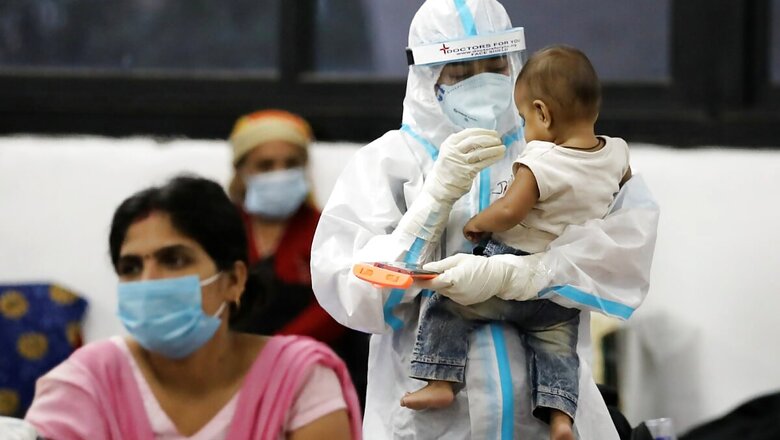
views
One in 15 Indians aged 10 or above or an estimated 6.6 per cent of the country’s population above 10 years had already been infected by SARS-CoV-2 and developed antibodies, the second national survey to estimate prevalence of the Coronavirus infection showed. The prevalence in adults was 7.1 per cent, the survey results showed.
The survey’s results also found that the prevalence was much higher in urban slums at 15.6 per cent, 8.2 per cent in non-slums, while in rural areas it was 4.4 per cent. The prevalence of the infection is not different by age group or gender. This showed that the risk of infection was four times higher in slums compared to rural settings and twice as much in non-slum urban areas.
The national sero-prevalence in May had showed that 0.73 per cent of population had been exposed to the novel Coronavirus, which translated to an estimated 64 lakh infections in early May, the period when the survey had begun. The first survey had also shown that for each case officially detected, there were an estimated 82-130 infections in the community. The second survey has shown there are 26-32 infections for every reported case.
The Indian Council of Medical Research (ICMR), the country’s apex biomedical research institute, conducted the second sero-survey between August 17 and September 22 in the same 700 districts/wards (in urban areas) of 70 districts across 21 districts where the first survey was held and collected 29,082 samples. This was done to understand the progression of the virus’ transmission in the same districts.
ICMR decided to include younger participants in the second survey since such individuals were also getting affected, said, ICMR Director General Dr Balram Bhargava.
“Sero-survey is an estimate of the trend of infection in the society and community. These are epidemiological tools to guide us to understand the infection transmission,” said Dr Bhargava.
“Typically, one sero-survey is not good enough to answer questions. We have to do serial sero-surveys in the same districts to know what is happening. So this clearly shows that lockdown, containment measures and behavioural changes have checked the spread of the virus. However, a large part of the population is still susceptible and vulnerable,” he added.
Even as the ICMR and government claimed that the lockdown was effective in checking the rapid transmission of the virus, especially in the rural areas, the first sero-survey results had shown otherwise. Many districts which were categorised as ‘zero case districts’ in official record during the May-June had infections in the community.
As part of the sero-survey, 3-5ml of blood is drawn from the survey participants following due procedure of informed consent. The sera is tested for presence of IgG antibodies against SARS-CoV-2 which indicates with a good rate of accuracy if the participant was infected by the novel Coronavirus. However, an infection necessarily does not mean Covid-19 disease as many infections have been found to be completely asymptomatic.
“Last time, the results showed that there were 82-130 infections for per reported case. However, that number has now reduced to 26-32 range. This shows that higher testing and the tracking approach is working,” said Dr VK Paul head of the National Task Force on Covid-19 and member of Niti Aayog.
Dr Paul added this has wider dimensions as many infections are silent and asymptomatic and thus, we can never find out each asymptomatic infection. “This (sero-survey) is an additional tool that complements testing, tracking and surveillance of those with influenza-like illness and severe acute respiratory infections,” Dr Paul said.
Apart from national sero-surveys, Delhi, Mumabi, Ahmedabad and Chennai have also conducted sero-surveys to check prevalence of the infection. The estimated prevalence of infection in these cities was; 29.1 per cent in Delhi in August; 57.8 in slum areas of Mumbai and 17.4 per cent in non-slum areas; 17.6 per cent in Ahmedabad and 21.5 per cent in Chennai.


















Comments
0 comment